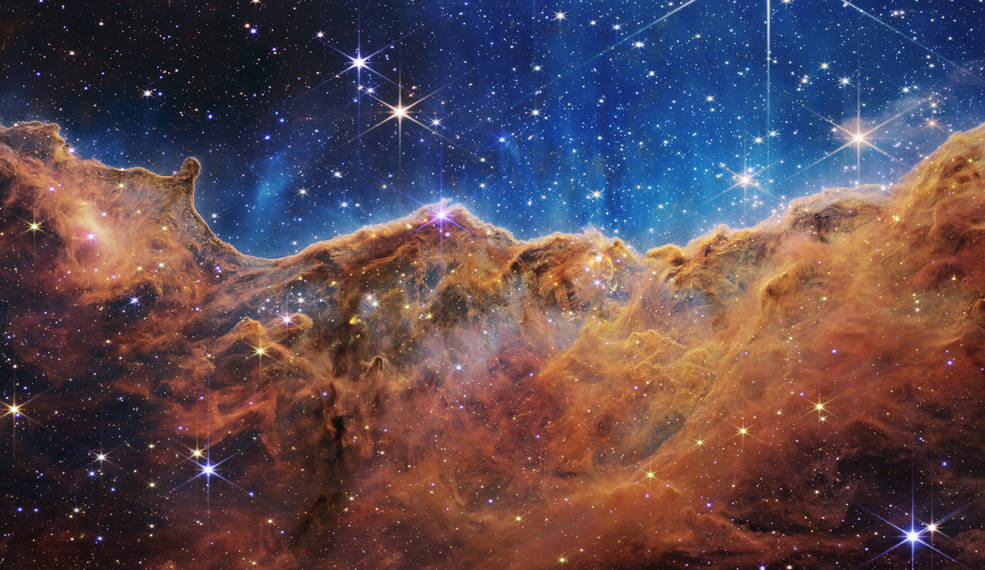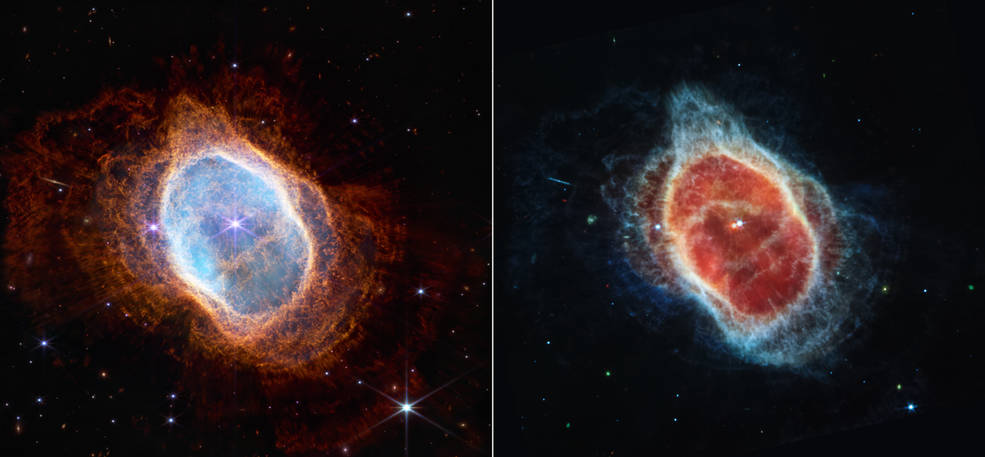Wesleyan Astronomy Prof Getting First Glimpse at Webb Telescope Data


Seth Redfield’s delight couldn’t be more apparent on the day the first images from the James Webb Space Telescope came through.
On July 11 NASA released images of the Carina Nebula; Stephan’s Quintet (a galaxy cluster), atmospheric readings of WASP-96b, a planet orbiting a distant star; and the Southern Ring Nebula.
While the images were certainly dreamlike and breathtaking, showing the oldest documented light in the universe from 13 billion years ago, it was the events of day two that got Redfield really excited. It was then that he, and scientists across the country, would start receiving raw data from Webb, giving them the opportunity to explore uncharted parts of the universe.
“The sense of discovery is really addictive and exciting for people. There’s a lot of mystery in the universe. There’s a lot of things we don’t fully understand and getting a tool (like the Webb telescope) is such a big leap in our capabilities,” said Redfield, professor of astronomy.
As a member of one of NASA’s Early Release Science teams, Redfield’s specific area of focus is exoplanets and the composition of their atmospheres. Over the next couple of months, the team will do an analysis of the data and present their findings in a series of articles in the prestigious journal Nature. Redfield and his research group have been preparing for this moment, testing artificial data to assure that their systems were ready when the real information arrives.
“You’ve heard the expression, the devil is in the details? We are going to spend a lot of time and a lot of effort delving into those details. I am really excited about pushing the limits of what this telescope can do,” Redfield said.
The stakes of Webb’s work were laid out by President Joseph R. Biden. “When this image is shared with the world, it will be a historic moment for science and technology, for astronomy and space exploration, for America and all of humanity,” Biden said at a news conference on July 11.
The telescope has been collecting data for the past month as it travels in an orbit four times the distance between the Earth and the moon. Redfield was among the scientists who provided the telescope with specific instruction on what to look for.
“There’s another thing that you’re going to find with this telescope: It is going to be so precise, you’re going to see whether or not planets, because of the chemical composition that we can determine with this telescope of their atmosphere, if those planets are habitable. And when you look at something as big as this is, we are going to be able to answer questions that we don’t even know what the questions are yet,” NASA Administrator Bill Nelson said at the press conference.
“One of the particularly exciting things for me is the search for life on another planet,” Redfield said. “There are two parts to this question – does life exist elsewhere on the planets that we know about? What is our capacity to find it?”
Redfield believes that by analyzing the molecular composition of a planet’s atmospheres and comparing it to existing models, like the Earth, Venus or Mars, they could determine what combination could only happen because of the presence of life. He is, to use his own words, obsessed with the idea that we might not know life if we see it – we only have one example of it here on Earth to guide our thinking.
“I think it is possible that we go through the whole Webb mission and not find this. That would be ok. But the fact we are on this precipice of making this kind of discovery, I think is really profound,” he said.

